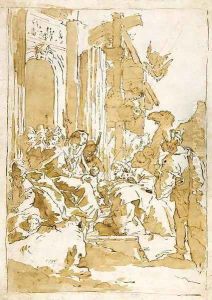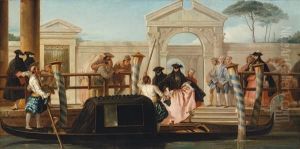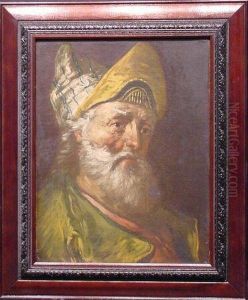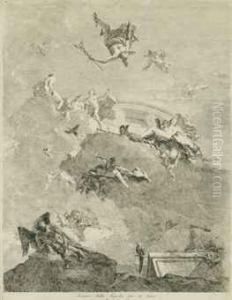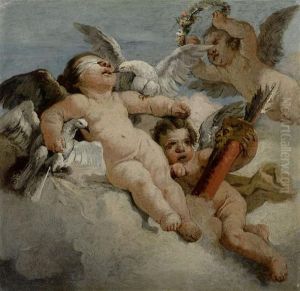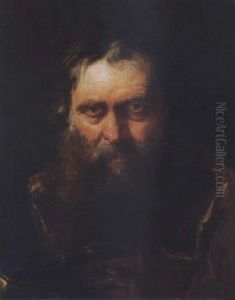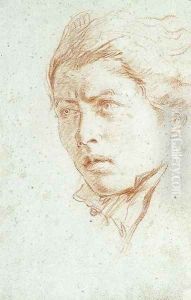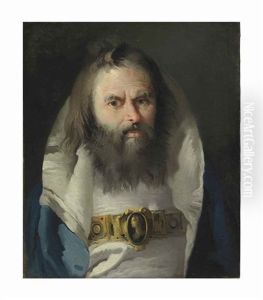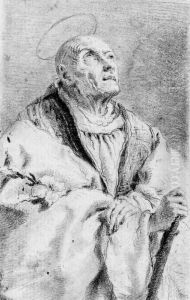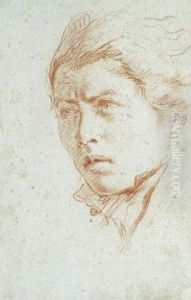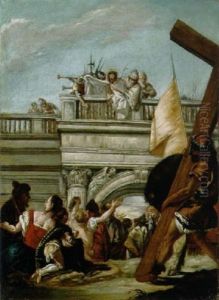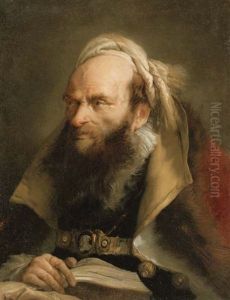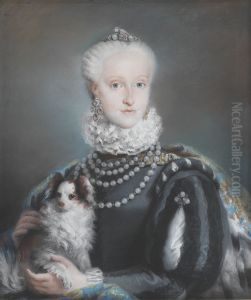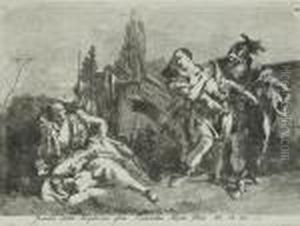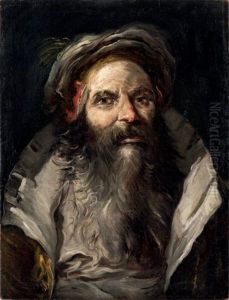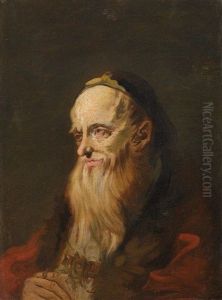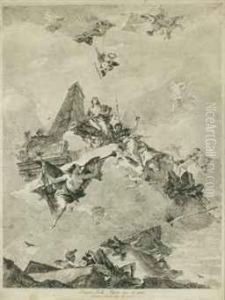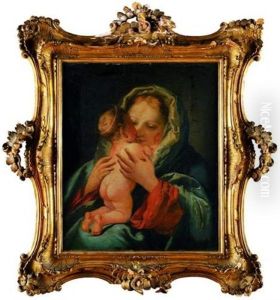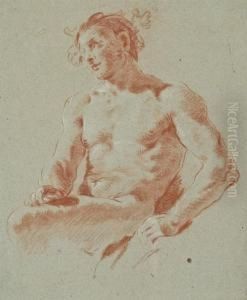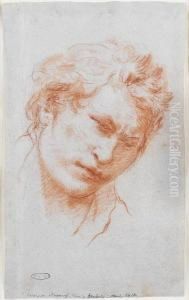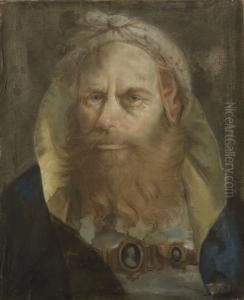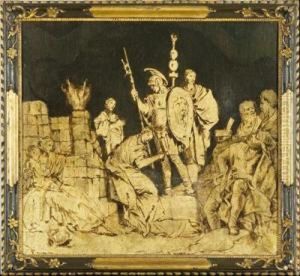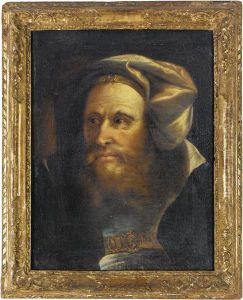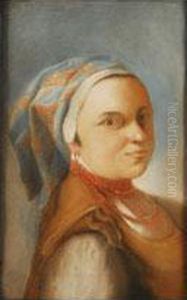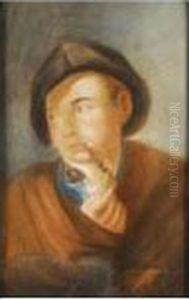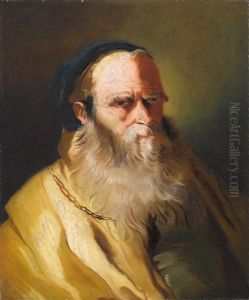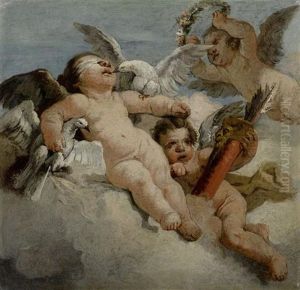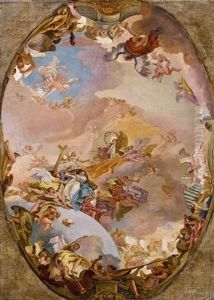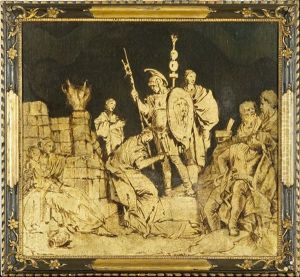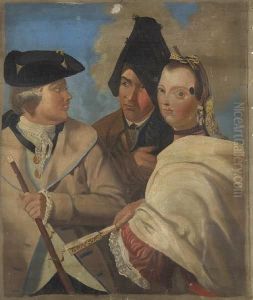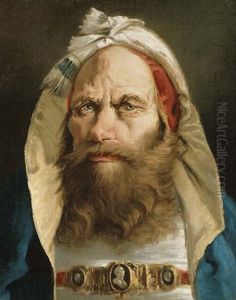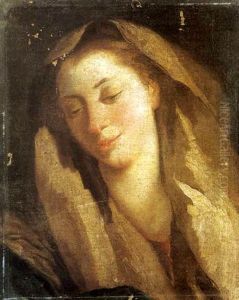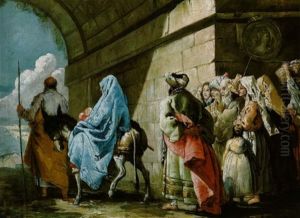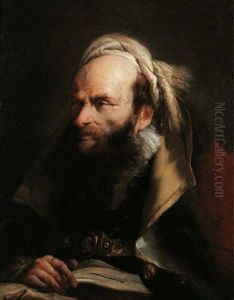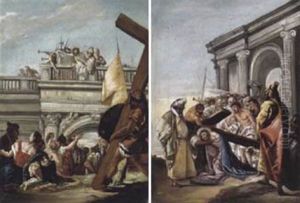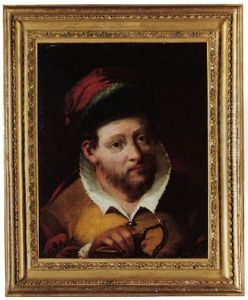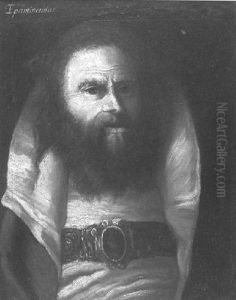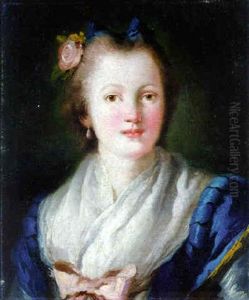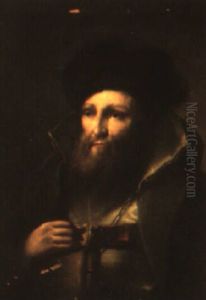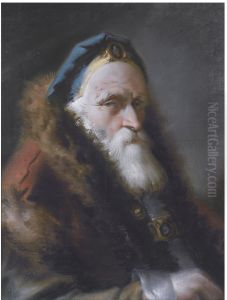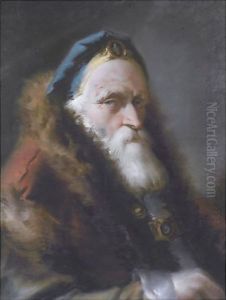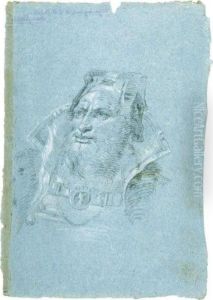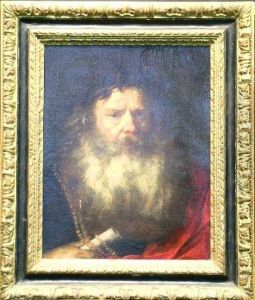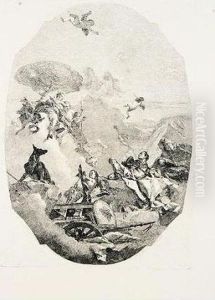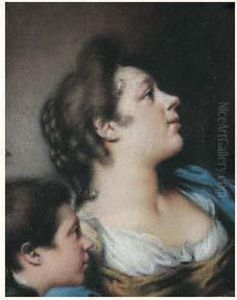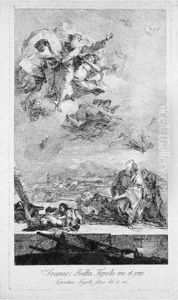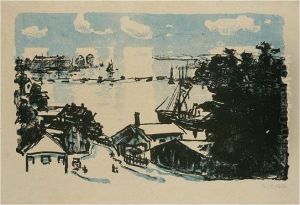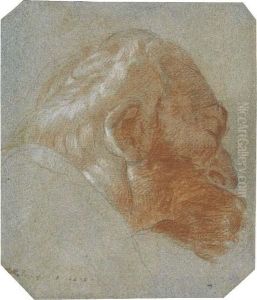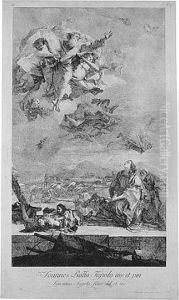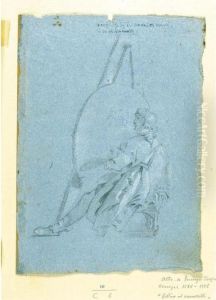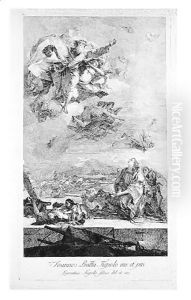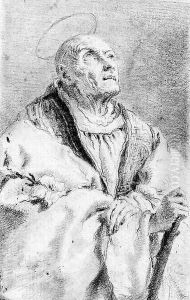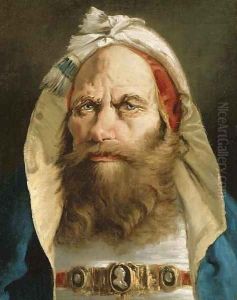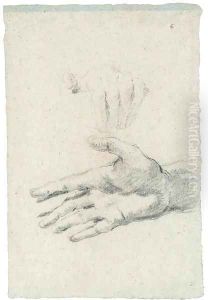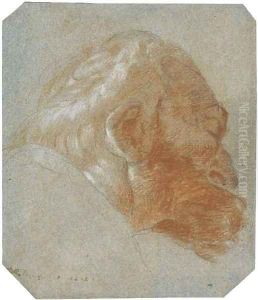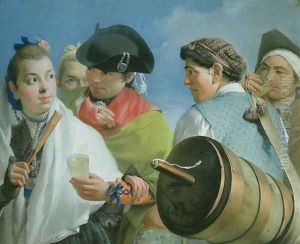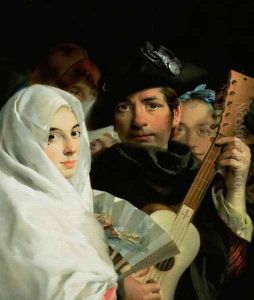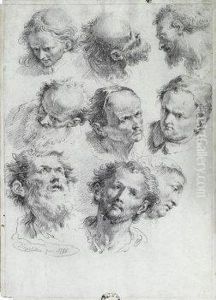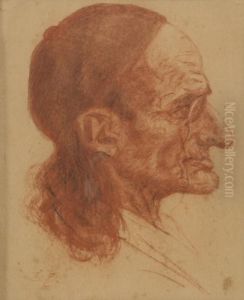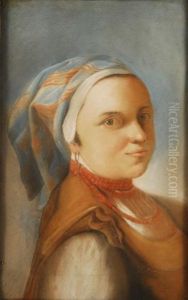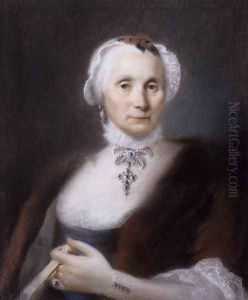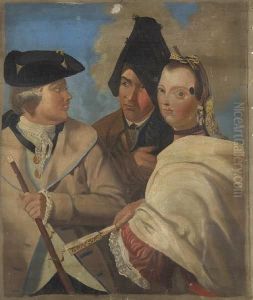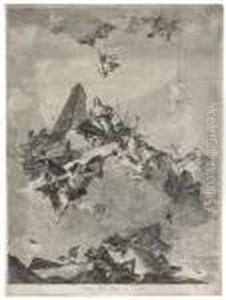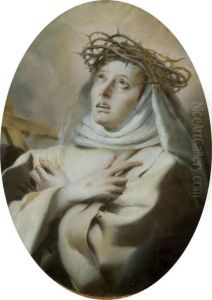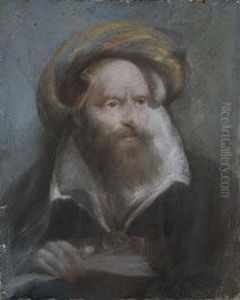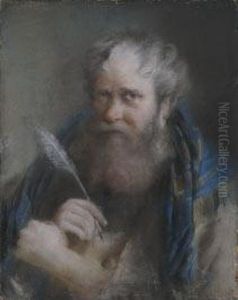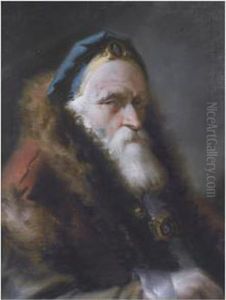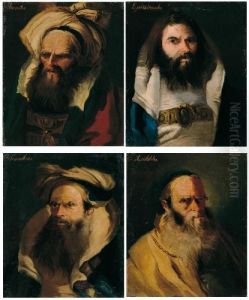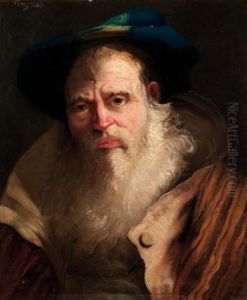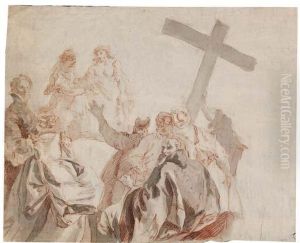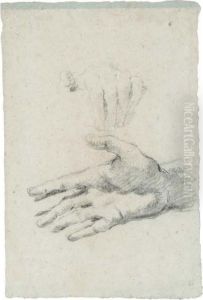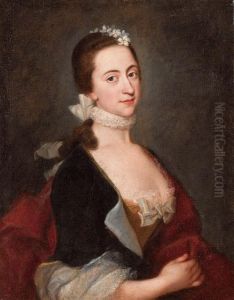Lorenzo Tiepolo Paintings
Lorenzo Tiepolo was an Italian painter and printmaker born in Venice, Italy, in 1727. He was the son of the famous Venetian painter Giovanni Battista Tiepolo and his wife, Cecilia Guardi, making him part of a prominent family of artists. From a young age, Lorenzo was immersed in the world of art, receiving his initial training from his father, who was one of the leading figures of the Rococo movement. This early exposure influenced Lorenzo's development as an artist, and he quickly adopted his father's style, specializing in frescoes and oil paintings that were characterized by their vibrant colors and dynamic compositions.
During his career, Lorenzo worked closely with his father and his younger brother, Giovanni Domenico Tiepolo. Together, they undertook numerous prestigious commissions across Europe, contributing to the decoration of palaces and churches in Italy, Germany, and Spain. One of Lorenzo's notable contributions was to the frescoes in the Würzburg Residence in Germany, where he worked alongside his father and brother in the 1750s. The trio's collaboration is considered one of the masterpieces of Rococo art.
In the 1760s, Lorenzo accompanied his father to Spain, where Giovanni Battista had been commissioned to decorate the Royal Palace of Madrid. During their stay in Spain, Lorenzo executed several important works, both independently and with his father. His style continued to evolve, incorporating elements of the emerging Neoclassical style, which was gaining popularity at the time.
However, despite his talents and contributions to the art world, Lorenzo did not achieve the same level of fame as his father or brother. His work was often overshadowed by their more significant achievements, and as a result, he remains a lesser-known figure in the Tiepolo family legacy.
Lorenzo Tiepolo's life was relatively short; he died in Madrid, Spain, in 1776, at the age of 49. Despite his premature death, Lorenzo left behind a body of work that, while not as extensive as that of his father or brother, demonstrates his skill and versatility as an artist. Today, his paintings and prints can be found in several major museums around the world, offering a glimpse into the artistic dynasty of the Tiepolo family and the vibrant world of 18th-century European art.
